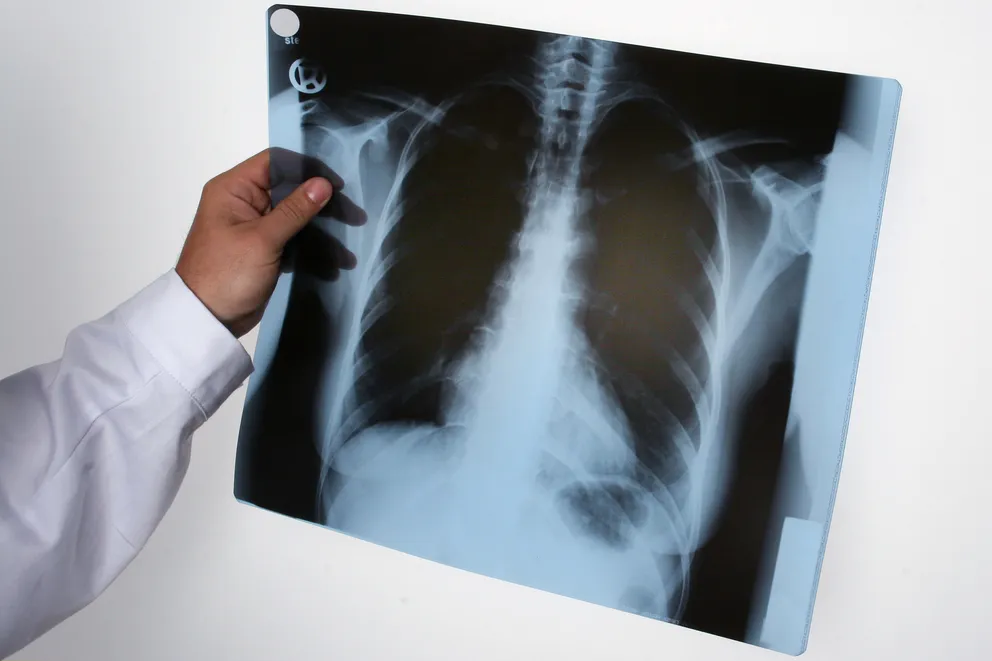Kansas City is facing an “unprecedented” tuberculosis (TB) outbreak that is affecting two counties, and health officials are worried that the spread may not be over yet. As of January 24, 2025, 67 people have been infected with TB in Wyandotte and Johnson counties.

Wyandotte County has seen the majority of cases, with 60 people infected, while Johnson County has reported 7 cases.
This TB outbreak, which started in 2024, is now the largest one ever documented in the United States. According to Jill Bronaugh, a spokesperson for the Kansas Department of Health and Environment (KDHE), this outbreak has gotten so large because of the rapid increase in cases over a short period of time.
Health officials in Kansas said they have been dealing with an "unprecedented" tuberculosis (TB) outbreak in the northeastern part of the state.https://t.co/nolVOBqLLE
— ABC 13 News – WSET (@ABC13News) January 27, 2025
“This is mainly due to the rapid number of cases in the short amount of time,” Bronaugh explained.
Although the outbreak has been serious, with most of the cases in Wyandotte County, KDHE says there is a “very low risk” to the general public, including people in surrounding counties.
Even so, officials are urging everyone to remain vigilant and continue taking precautions to stop the spread of TB.
“This outbreak is still ongoing, which means that there could be more cases,” Bronaugh added. She also pointed out that some other states are dealing with their own large outbreaks of TB that are still not under control.
Historical Tuberculosis Surge in Kansas: 'Largest Outbreak They've Ever Had' https://t.co/m0es2gG5Cx
— People (@people) January 27, 2025
To handle the situation, KDHE is working closely with local health departments and the Centers for Disease Control and Prevention (CDC). Together, they are tracking cases, providing treatment to those infected, and putting in place measures to prevent more people from getting sick.
‘Unprecedented’ TB outbreak recorded in Kansas with nearly 70 cases recorded https://t.co/5rj4vLDMeh
— The Independent (@Independent) January 27, 2025
Despite the intense focus on this outbreak, TB cases across Kansas are actually on the decline. In 2024, KDHE reported 109 active cases and 626 latent TB infections statewide. But by early 2025, that number had dropped to just one active case and seven latent cases.
Even with these improvements across the state, the TB outbreak in Kansas City is still a major concern. KDHE Deputy Secretary Ashley Goss shared that the outbreak started last summer with 65 active cases and a similar number of latent cases.
A Kansas Department of Health and Environment official told a Kansas Senate committee Tuesday the agency continues to work to resolve an "unprecedented" tuberculosis outbreak in Wyandotte County:
— KSHB 41 News (@KSHB41) January 25, 2025
https://t.co/8OZ61MpHJH
However, things are starting to improve, with the number of active cases dropping to around 32. “We are trending in the right direction right now,” Goss said.
During a recent meeting with the Senate Public Health and Welfare Committee, Goss called the outbreak “unprecedented.” “Some of you are aware, we have and still have mobilized staff and resources addressing an unprecedented tuberculosis outbreak in one of our counties,” she told the lawmakers.
She added that the CDC has been instrumental in helping manage the crisis. “CDC remains on the ground with us to support. That’s not a negative. This is normal when there’s something unprecedented or a large outbreak of any kind, they will come and lend resources to us to help get a stop to that.”
Kansas faces largest tuberculosis outbreak in U.S. history: https://t.co/gc9eLghtX5 By @lilyobrienkake
— KAKE News (@KAKEnews) January 28, 2025
Goss also explained that people with active TB are no longer contagious after 10 days of medication and three negative sputum tests. “They can go about their lives, they don’t have to stay away from people, and they can go back to work, do the things, as long as they continue to take their meds,” she said.
The treatment for both active and latent TB usually lasts for several months. KDHE is also working with large employers in the area to make sure that any employees who may have been affected by the outbreak are properly treated and monitored.
TB is caused by the bacteria Mycobacterium tuberculosis and mainly affects the lungs, but it can also spread to other parts of the body, including the brain, kidneys, or spine.
There are two forms of TB: latent and active. Latent TB means the bacteria are in the body but are not causing any symptoms and are not contagious. However, without treatment, latent TB can develop into active TB, which is contagious and can be very dangerous.
Active TB comes with symptoms like a cough that lasts for three weeks or more, chest pain, coughing up blood or mucus, weight loss, fatigue, fever, chills, and night sweats.
TB spreads when a person with active TB coughs, talks, or even sings, especially in poorly ventilated indoor spaces. The bacteria can stay in the air for hours, which makes it easy for other people nearby to breathe in and get infected.
The best way to stop TB is to treat people with latent TB before it turns into the active form. For active TB cases, people need to take antibiotics for several months to get rid of the infection and prevent it from spreading.
“Early detection, proper treatment, and public awareness are crucial to controlling TB and reducing the risk of severe outbreaks,” said health officials.
The fast spread of TB in Kansas City has really shown just how important it is to catch the disease early, treat it properly, and make sure the public understands how to prevent it.
Health officials are continuing to track and manage the outbreak, but they’re stressing the need for everyone to stay alert. The situation is still ongoing, and new cases could still appear.
What do you think of the story? Share your thoughts in the comments below!


